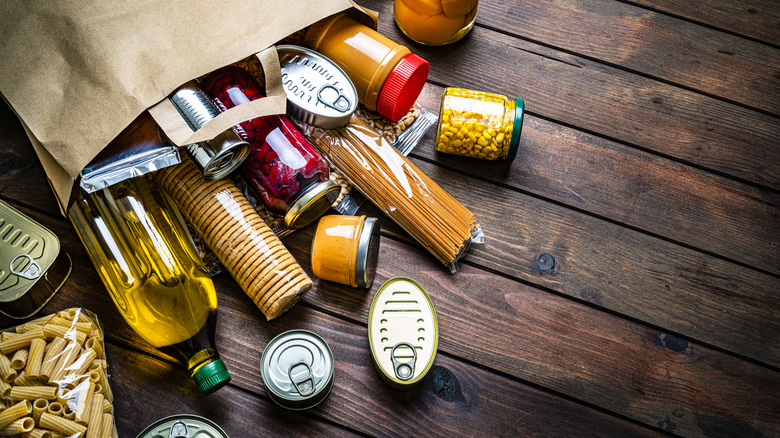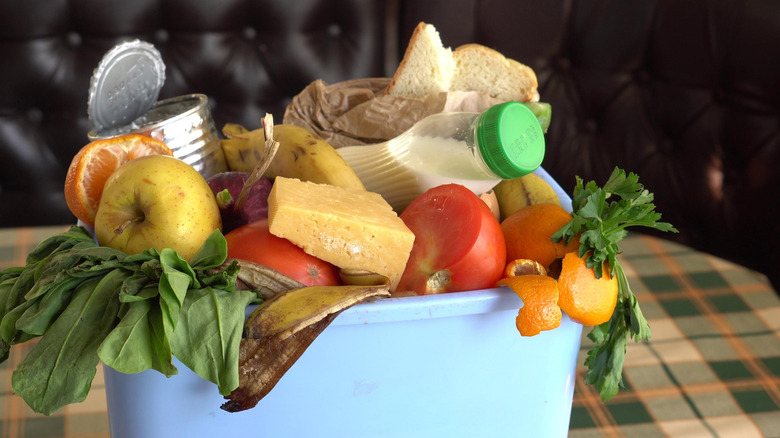The Slight Difference Between Sell-By And Use-By Dates
While sell-by and use-by dates on food products are linked to good food safety practices, it's not always easy to understand what is intended by the numbers stamped on the items lining your grocery store shelves. The key difference between these two labels is that the sell-by date is directed toward retailers and the use-by date is offered for consumers.
A retailer reads the sell-by date as an indicator of when a product should be taken off the shelf. The use-by date, on the other hand, offers information to the consumer about the quality of the product, which will decline after the printed date. Neither is considered a food safety label and products tend to be safe to be eaten after the sell-by or use-by date, so long as they have been safely handled by the retailer and consumer. Federal regulations do not require that food products (except for certain baby formulas) be marked with a sell-by or use-by date.
Better understanding the sell-by and use-by dates
Sell-by dates are typically used on fresh and prepared foods while use-by dates are generally applied to shelf-stable items, including canned goods and condiments. Though the appearance, aroma, taste, or texture of these foods will change over time, many food products remain perfectly edible after these dates have passed. Such is the case with egg carton sell-by dates.
Oftentimes, how you store and handle your food is more important than the sell-by or use-by date in determining its safety. To extend the life of a jar of peanut butter, for example, you'll want to store it in your refrigerator. The best storage practices vary from one food to another, sometimes even within a single category of food. For example, while white rice is shelf-stable, brown rice needs to be kept in the fridge. Acquiring the appropriate containers and understanding the ideal storage conditions for specific ingredients is helpful when it comes to keeping your food safe after the sell-by or use-by date.
Using your senses to avoid food waste
There's a fine line between food safety and food waste. On the one hand, you never want to consume food that could potentially make you sick. On the other, you don't want to throw out perfectly good food. Each year about 42 billion pounds of otherwise edible food is wasted at home in the United States, contributing to major environmental and societal issues (via Feeding America).
The gray area of sell-by and use-by dates can make things seem confusing — but don't forget that your senses are powerful tools to determine whether food has expired. If you have any suspicions about the safety of a food product after reading the printed labels on the packaging, carefully look it over for signs of spoilage, such as strange colors or textures that could be indicators of mold or that ingredients have separated as the product becomes rancid. You may also give the food a sniff to check for any bad odors. When in doubt, throw it out — but if your milk is a few days past its sell-by date, yet it still smells and looks okay, go ahead and pour it into your morning coffee.



